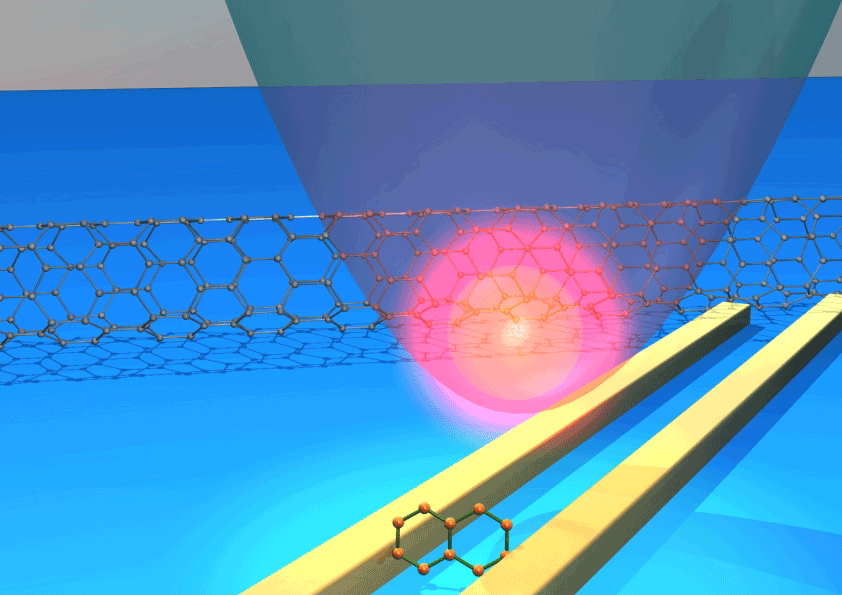The Research Network
Functional Nanostructures
is funded by the
Baden-Württemberg Stiftung.
Atomic force microscopy (AFM) is the work-horse among all scanning probe microscopy (SPM) methods since it allows the imaging of surfaces down to the atomic-scale in liquids, vacuum, and ambient conditions. The sample topography as well as elastic, magnetic, electrical, thermal, and chemical properties can be recorded with high spatial resolution. As in all scanning probe techniques, however, it is a weakness that the exact tip shape and the chemical identity of its apex atoms are commonly unknown. Therefore, it is extremely difficult to directly compare experimentally recorded tip-sample interactions with theoretical models.
A way out of this dilemma was is the subject of the project: In cold atom scanning probe microscopy (CA-SPM) the tip is replaced by a gas of ultra-cold Rubidium atoms that is confined inside an electromagnetic trap representing the cantilever [1,2]. Such a cold-atom SPM can be operated in a dynamic mode by making the gas oscillate within the trapping potential and measuring how the oscillation frequency changes as the trap is scanned over the surface. Since the interaction potential between the cloud and the sample slightly modifies the potential of the trap, the oscillation frequency of the cloud is changed and the interaction potential can be calculated from the frequency shift. Interestingly, the theory behind the dynamic mode of CA-SPM and the theory of the dynamic force spectroscopy that has been developed for AFMs [3-5] is essentially the same. Therefore, it is very promising to combine these techniques and for measuring the interactions between the atoms of the gaseous probe tip and a sample surface. Our project joins the expertise of three groups in Tübingen (J. Fortágh), Karlsruhe (H. Hölscher) and Stuttgart (K. Balsubramanian) in the fields of cold atoms, scanning probe microscopy, and functional nanostructures, respectively.

Fig.1: Schematic of “Cold Atom Scanning Probe Microscopy & Spectroscopy”. An ultra-cold atom cloud in a magnetic trap scans a surface in all three dimensions. The dynamic of the atom cloud in the parabolic potential is used to determine the sample topography as well as electromagnetic fields and dispersion forces.
| [1] | M. Gierling, P. Schneeweiss;, G. Visanescu, P. Federsel, M. Häffner, D. P. Kern, T. E. Judd, A. Günther, J. Fortágh: Cold Atom Scanning Probe Microscopy, Nature Nanotechnology 6, 447 (2011) |
| [2] | P. Schneeweiss, M.Gierling, G. Visanescu, D. P. Kern, T. E. Judd, A. Günther, J. Fortágh: Dispersion forces between ultracold atoms and a carbon nanotube, Nature Nanotechnology 7, 515 (2012) |
| [3] | H. Hölscher, W. Allers, U. D. Schwarz, A. Schwarz, R. Wiesendanger: Determination of tip-sample interaction potentials by dynamic force spectroscopy, Phys. Rev. Lett. 83, 4780-4783 (1999) |
| [4] | H. Hölscher, S. M. Langkat, A. Schwarz, R.Wiesendanger: Measurement of Three-Dimensional Force Fields with Atomic Resolution using Dynamic Force Spectroscopy, Appl. Phys. Lett. 81, 4428-4430 (2002) |
| [5] | H. Hölscher: Cold atoms feel the force, Nature Nanotechnology 7, 484 (2012) |